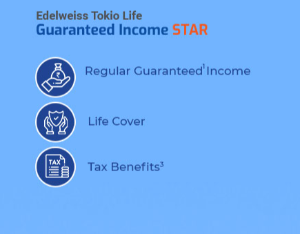ULIPs vs FDs and Bonds
Blog Title
1768 |
When it comes to making investments, you are often left confused between the different options open to you. The most common confusion arises between three instruments: ULIPs, FDs and TFBs. Which one is better among them? And how do they do vis-à-vis each other, i.e. ULIPs vs FDs vs Bonds?
This is a question that stumps most small investors as they see and hear different versions of the answer depending on whom or where they approach. To understand them, let’s do a quick comparison.
ULIPs vs FDs vs Bonds: Which one is best
ULIP is Unit Linked Insurance plan which is offered by a Life Insurance company. In ULIP, some part of the premium that you pay goes towards investments in equity, government bonds and other market-linked investments. Always look for the ULIP charges comparison between different fund houses before you invest.
Bank FDs are money invested in a bank for a fixed period fetching interest from the bank. Meanwhile, tax-free bonds or TFBs, also called infrastructure bonds are securities that are issued by an entity, mostly Government companies also called as Public Sector Undertakings. These are fixed income securities that offer interest on a fixed rate for a certain period. These are avenues for the borrowers to generate debt capital to fund infrastructure projects.
Death benefit
ULIP is the only one among the three that provides you with a death benefit. Since it is Life Insurance, there is a Sum Assured which is payable to the nominee on the death of the life assured. The other two are only investment avenues with no death benefits.
Flexibility
ULIPs offer you the flexibility of switching the fund allocation. With switching made easy due to online mode, you can switch between funds depending on the market outlook and the risk mindset that you wish to adopt. This facility is not available in the other two instruments. ULIPs sometimes issue additional loyalty benefits by issuing extra units. This feature is again absent in the other two avenues.
Tax rebates and tax exemptions
Only ULIPs provide both tax rebate and tax exemption facilities. Tax rebates mean that the amount invested is eligible for deduction from your income, thus reducing your taxable income and hence your tax burden. Tax exemption indicates that the income received from these investments is not subject to tax. In other words, the payouts received are tax-free in the hands of the investor. ULIPs offer tax rebates and tax exemptions under section 80C and 10D of the Income Tax Act, 1961. TFBs do not get the benefit of section 80C. FDs do not offer either tax rebates or tax exemptions.
Lock-in period
Although ULIP has a lock-in-period of 5 years, which is not there in bank FDs, the truth is that if you withdraw the amount deposited in an F.D before the due date, there is an interest loss due to the same. TFBs have a minimum lock-in period of 10 years.
Charges
A ULIP issuer deducts some amount for mortality, premium allocation, fund management and administration charges as applicable. These are not applicable for either FD or TFB.












